🥖🧀 The Bread and Cheese Festival of Quel
Bread and cheese are tossed to the inhabitants of the picturesque village of Quel to honour a 500-year-old tradition born from a divine miracle. Plus some bread history and a recipe.
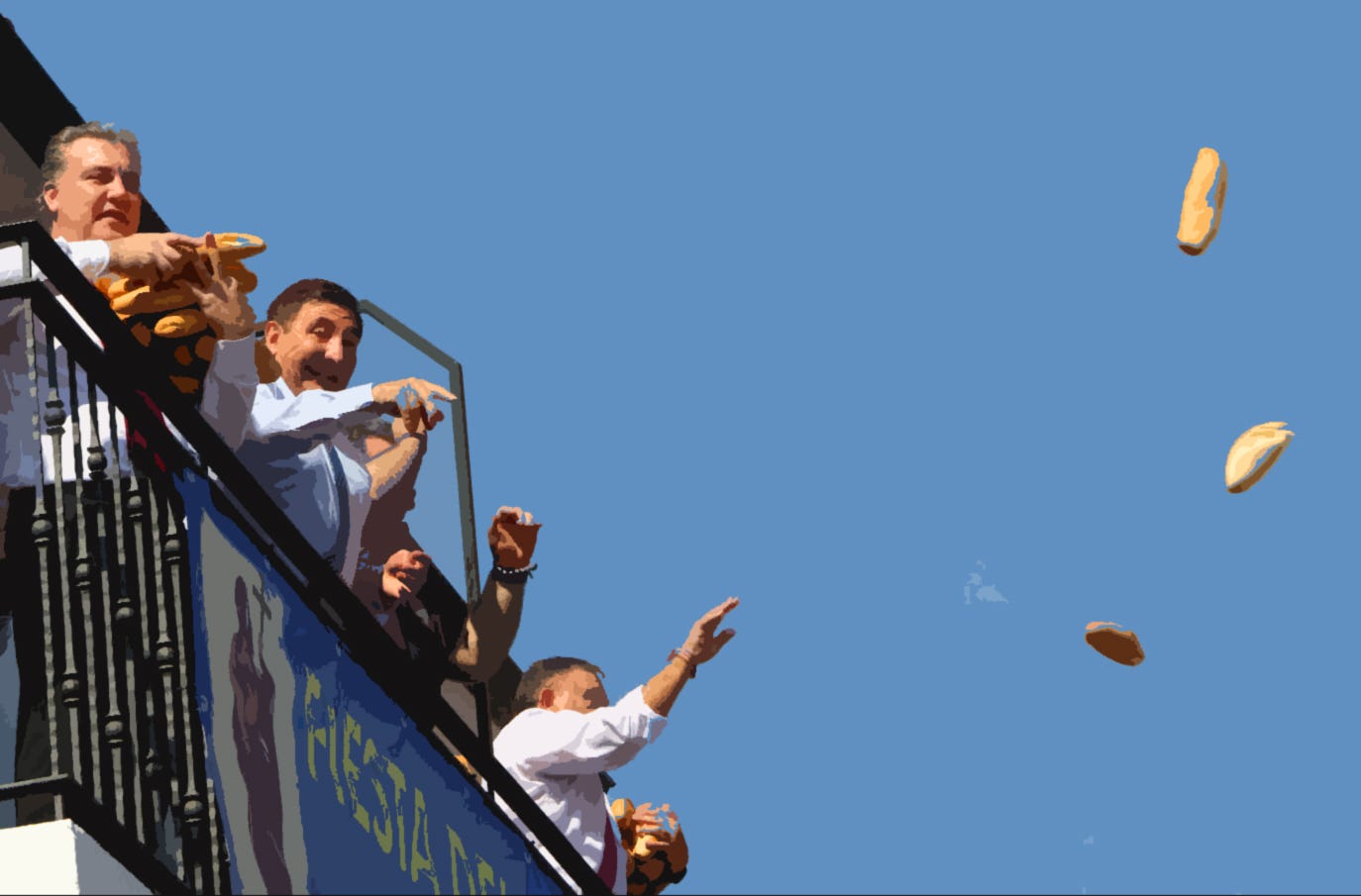
The year is 1479 and the tiny town of Quel is in the throes of a great pandemic which has killed the vast majority of its already diminutive population. Such misfortune must surely be a punishment from God for their sinful and immoral ways, and the only salvation is through repentance. The 17 surviving residents of Quel ask for forgiveness by holding a procession from the church to the hermitage, carrying 13 candles representing 11 saints, Jesus Christ, and the Virgin Mary. By the time they reach the hermitage all candles have burned out except those of Christ and the Virgin.
This seemed to work as only a few more died after the contrition and so a brotherhood was founded in gratitude of the divine miracle. This very brotherhood has been responsible for carrying on the tradition for the last 500 years – making it one of the oldest festivals on the Iberian Peninsula and one of the very few that have been celebrated uninterrupted, even during our most recent pandemic. Which makes sense if you think about it…
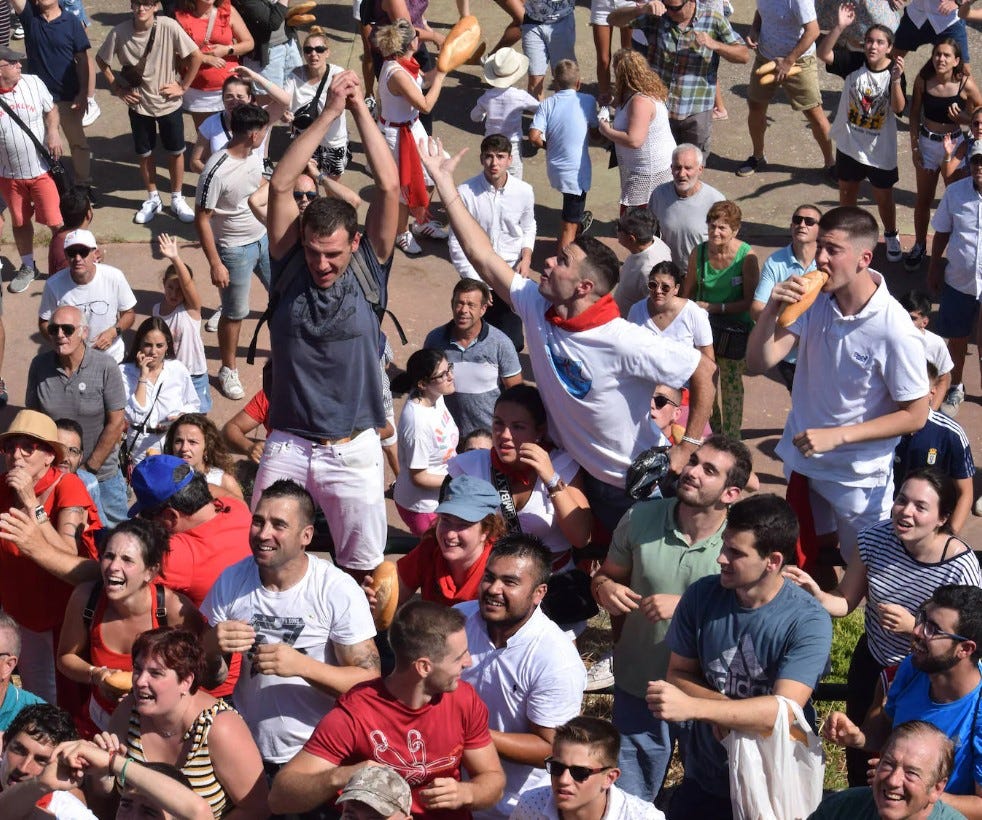
The Bread and Cheese Festival of the picturesque village of Quel, La Rioja, is held every August. The festival starts on the evening of the 5th and continues till the 10th, but the great launch of 2,500 bread rolls and 60 kg of cheese wrapped in foil hurled from the balcony of the hermitage of Santo Cristo de Quel happens on the 6th.
The bread and cheese toss is the main attraction, but not before the brotherhood, village residents, and visitors have made their way from the town’s church, accompanied by the tiny statue of Our Lady of Antiquity, to the hermitage where the all-important Mass takes place. During the rest of the week there are dances, music concerts, ball games, contests, processions, parades, and children’s workshops.
Surrounded by vineyards and the red sandstone and gypsum cliffs, Quel is well worth a visit for anyone doing a tour of La Rioja. Wine enthusiasts will find themselves in the middle of the Ruta del Vino Rioja Oriental (Eastern Rioja Wine Route) and dinosaur enthusiasts have the nearby “route of the dinosaurs” between the villages of Enciso and El Villar. The 15th century castle, perched 100m upon a slice of rock face above the village of Quel, is free to visit and can be accessed by car or on foot.
Let’s talk about Bread.
When I arrived in Spain, I was amazed at how cheap bread was. In the late 90s, a loaf of bread from the bakery was about 70 pesetas (about 26 pence or 50 US cents). The shelves piled up high with this cheap white bread were empty by 3pm. My ex would buy a whole barra (baguette-like but wider and shorter) and consume it in a day. In fact, when I met him his diet mainly consisted of chorizo and bread. Bread was (and still is) an integral part of the Spanish diet.
“Donde esta el pan?” (where’s the bread?) said zit picking, misogynist, racist, overall slob, ‘Torrente’ – in one of my first impressions of Spanish cinema. Actually, turns out he didn’t say those exact words but he was definitely disgusted to find that bread was not served in the Chinese restaurant that he was quickly thrown out of. I hardly understood a word of that movie when I saw it for the first time, but that scene in particular made an impression as it seemed so typical of the Spaniards’ intense love affair with bread, and it became our catchphrase whenever we went somewhere that didn’t offer bread with a meal (Australia for example).
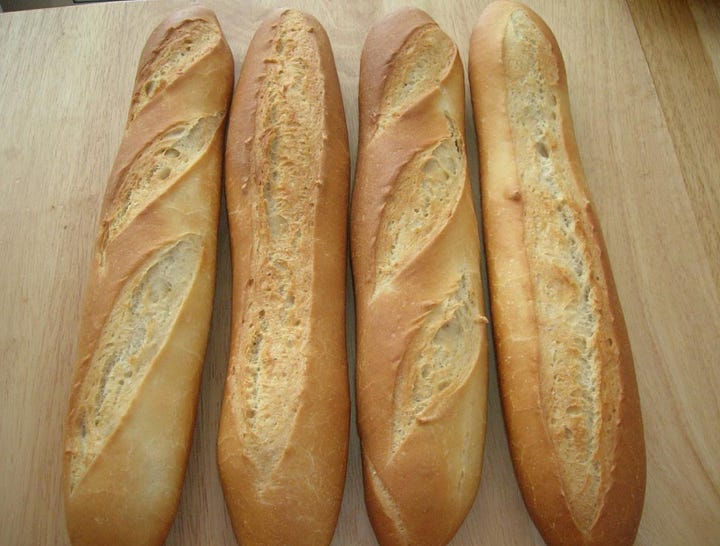
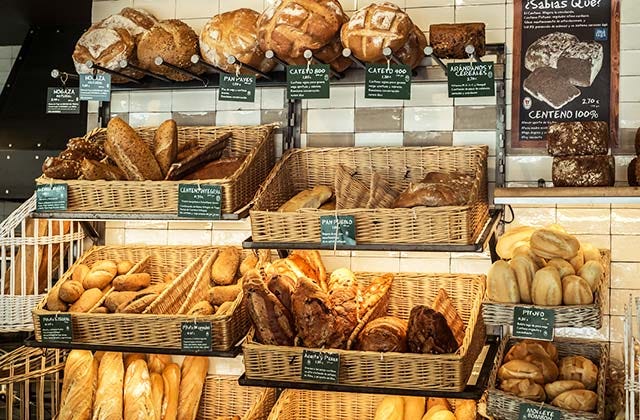
Today when you go to a bakery, there are dozens more options available. There are breads of all shapes and sizes, seeded, gluten-free, wholemeal, and of a variety of grains. And as it has been for millennia, bread continues to be a staple at every meal.
Bread is older than the Roman Empire on this peninsula and wheat the most cultivated cereal, able to withstand the harsh dry climate of the interior. Bread in Spain, as it is in many Mediterranean countries, has a long history of cultural and religious significance. The Iberians cultivated wheat and knew how to ferment it, making bread from the yeasty beer foam. This created a lighter fluffier bread which impressed the Romans, however it was these invaders who introduced the mill and oven which improved production, able to feed the masses.
The Moors continued the bread tradition, but on the Christian side of the divide, the bakers began to form unions from the 12th century. Yes, there have been bakers’ guilds in Spain for more than 750 years! Bread takes on a special significance during religious observances such as the Eucharist during Mass, and religious holidays such as Semana Santa, and of course, the special breads that honour a certain saint or Virgin.
After the conquest of America, bread in the north of Spain was sometimes made with maize. The bread of Galicia, Asturias, Cantabria, and the Basque Country typically have darker denser bread, more similar to bread in the north of Europe while in southern Europe white bread continues to be more popular. Historically, brown bread made with rye, barley, buckwheat or whole wheat was considered a poor man’s food, especially during the Franco regime.
Many recipes that are considered quintessentially Spanish are made with bread, such as the cold soups gazpacho, ajoblanco, and salmorejo, as well as migas, torrijas, pintxos, and empanadas. Unfortunately these days we are seeing fewer people eating bread bought from bakeries and more the processed bread from supermarkets because it’s cheaper. There are fewer bakeries and more factories making bread today.
Ok, so that’s enough about bread. Almost. Because I wanted to share a bread recipe which I found on a YouTube channel I’ve been following for a few years mainly for the fermenting tips, called Pro Home Cooks. He has a great versatile recipe for bread that can be used as a pizza base, long roll, pita pocket, or sandwich pancake.
This is the recipe:
1000g bread flour
20g salt
5g yeast
750g water
Mix the ingredients well and knead the dough till smooth.
Place it in a container and leave in the fridge overnight to ferment.
Section the dough into pieces and roll into dough balls. Cover and leave to rise again for another 2 hours.
Then you can shape the balls into a pizza base and add toppings.
Or, you can roll another ball out a little thicker and throw it into the oven for a pita bread.
Roll out another ball like the pita but spray a little with water before covering with sesame seeds. Fry it in a pan with olive oil on both sides for a sesame pancake sandwich.
Or, finally, you can fold and stretch it into a baguette shape long roll, leave to rise a little longer, score surface, and bake.
Fun Fact: The English word ‘companion’ comes from the French ‘compain’, or Latin ‘com panis’, meaning ‘with bread’. Breaking bread with someone makes them your companion. 🤗




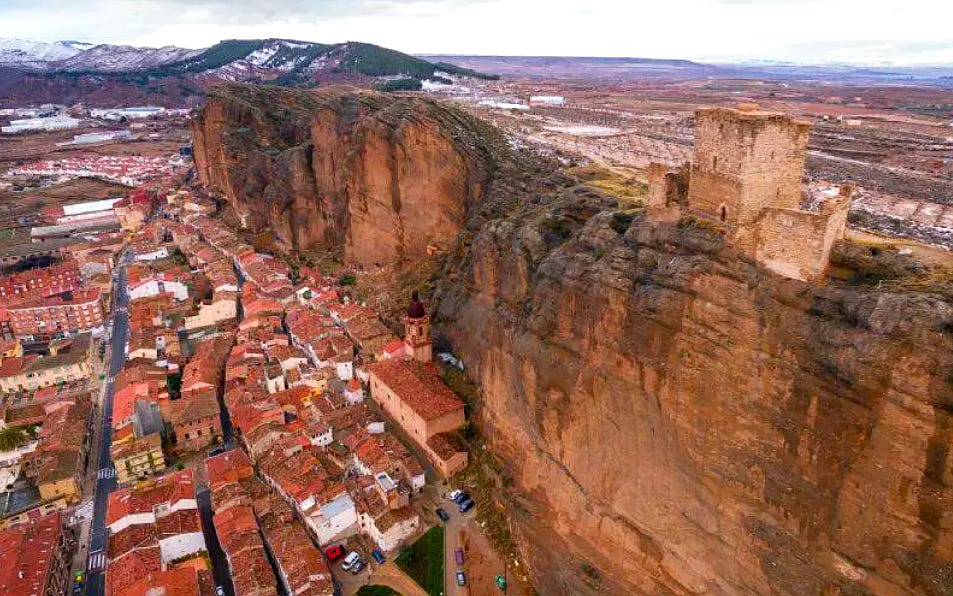
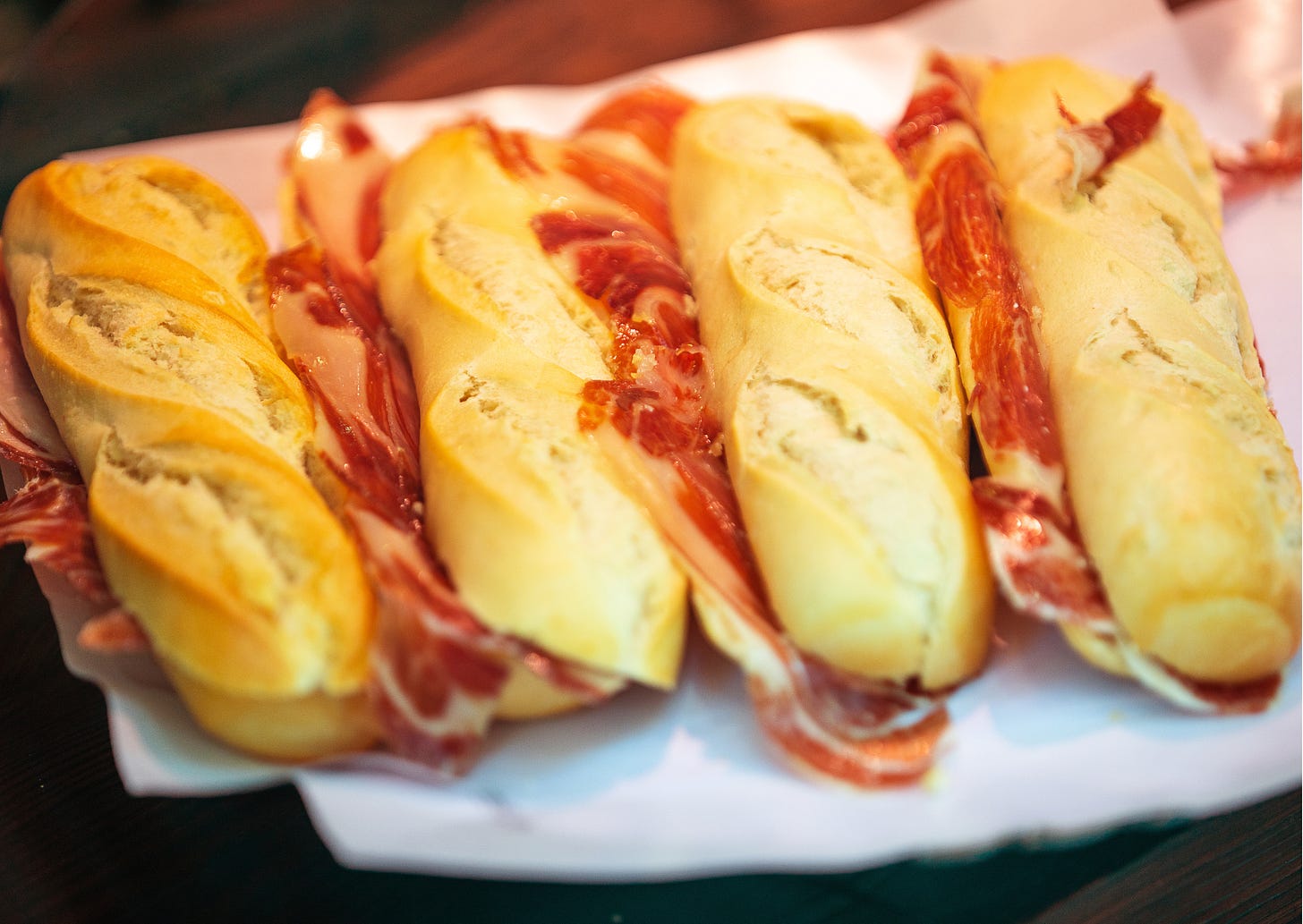
This looks really amazing. I love age-old tradition. And when it's coupled with bread and cheese---all the better. Hope you're well this week? Cheers, -Thalia
Fascinating bread history, thank you ! :-)